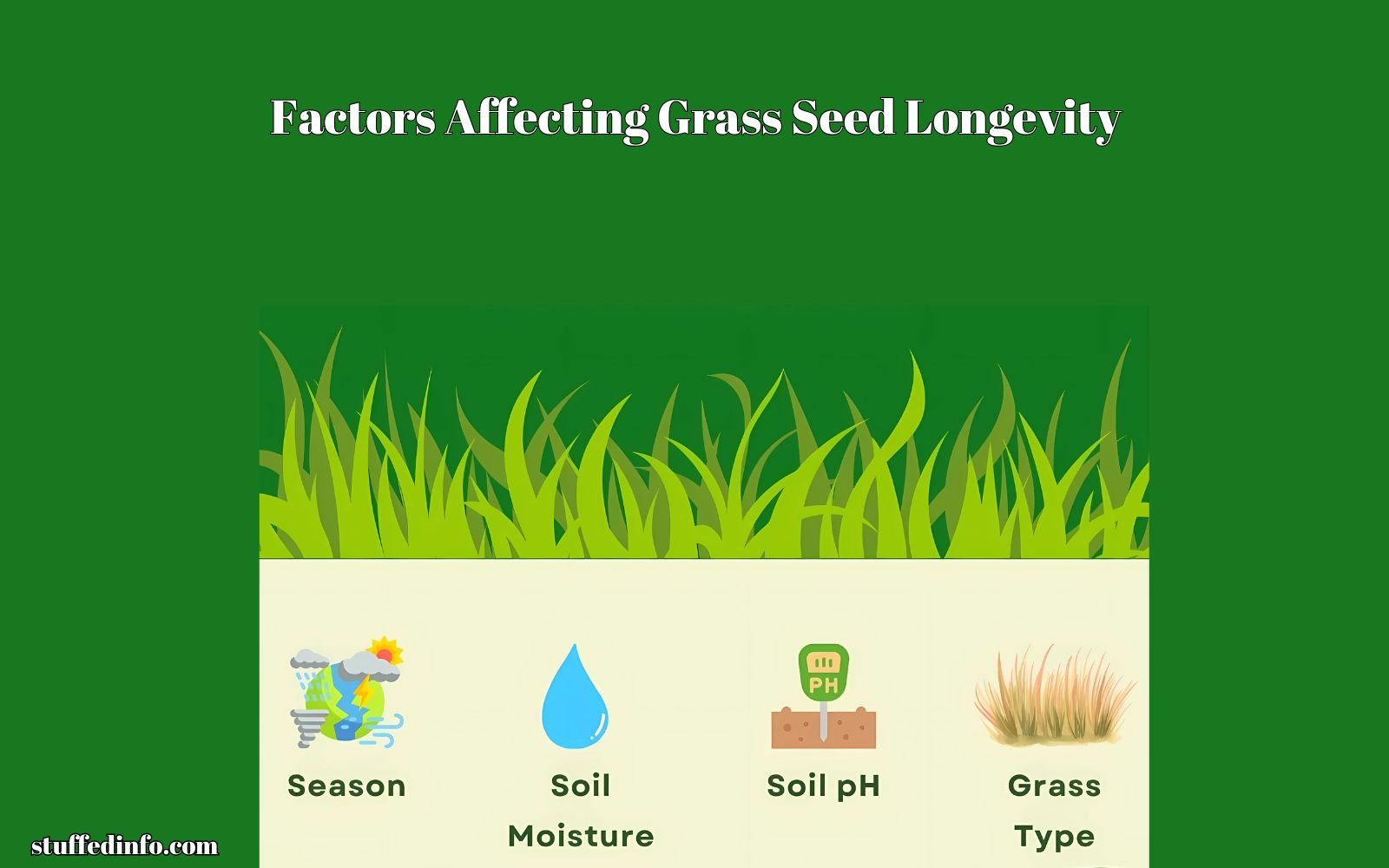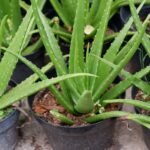Grass seed can become bad over time, which is mostly determined by storage conditions and seed quality. They are typically viable for 2 to 3 years when properly stored, and up to 5 years under optimum conditions. In addition to this, for gardeners and homeowners who want to have lush lawns, grass seed viability is an important consideration. Therefore, to help them in this matter, we prepared a complete guide answering the “Does grass seed go bad”, “What are its longevity and benefits”, “How to store them”, etc. So, read the complete article till the end.
Table of Contents
ToggleDoes Grass Seed Go Bad?
So the answer to the very first question that is “does grass seed go bad” is a big yes. Thus, just like every other organic thing, they also have a shelf life. However, there are a few things that play a major role in its condition and quality. Therefore, these seeds are very delicate and demand proper moisture level, humidity, light exposure, and other conditions to stay fresh and useful for years. In addition to this, it is not advised to use bad grass seed as old or poor quality seeds have very low germination rates.
Plus, they frequently fall by 10% annually which results in spotty or sparse growth that is unable to create a healthy lawn. Besides that, fresh seeds generate stronger, healthier grass that can tolerate environmental pressures whereas dead seeds might result in weakened plants that are more vulnerable to pests and diseases. Furthermore, poor-quality seed may result in a lawn that needs more upkeep and care, such as more overseeding and pest control, which may be expensive and time-consuming.
Factors Affecting Grass Seed Longevity
Now that we know the answer to “Does grass seed go bad or not”, it’s high time to learn about the various factors that are responsible for affecting its condition. Therefore, get a quick view of them in the following points:

- Seed quality: Fresh, high-quality seeds germinate fast and have a longer shelf life than older or inferior seeds. Since fresh germination is a crucial process, the seeds demand a fertile lawn to grow in a healthy way.
- Storage conditions: Seeds should be stored in a cool, dry, and dark place with a temperature range of 4°C to 10°C. Thus, to keep out moisture and pests, seeds should be kept in sealed or air-tight containers.
- Moisture levels: Furthermore, it’s important to keep moisture levels between 10% and 20%. Therefore, too little moisture will cause seeds to dry out and too much moisture can result in mildew and rot.
- Humidity: Because high humidity can hamper the germination process, low humidity (below 50%) is crucial for maintaining seed viability. To extend the life of seeds, a steady, low temperature must be maintained at any cost.
- Light exposure: Last but not least, since light can impair seeds’ viability and encourage early germination, seeds should be kept out of direct sunlight. Hence, to shield seeds from light exposure, store them in opaque or dark containers.
Tips To Use Fresh And Old Grass Seed
At some point in time, every gardening enthusiast is left with fresh and old seeds. Therefore, in the case of grass seeds, there are different tips and tricks to use to get a healthy lush garden. Hence, to learn about them in detail, read the below-shared sections:
Fresh Garden Seeds
The different ideas and ways to use your fresh garden seeds are mentioned below:
- Select the best time: Fresh grass seed should be planted at the best times of the year, which are usually early spring or early fall when temperatures are mild and moisture content is ideal for germination.
- Get the soil ready: Before sowing, loosen the soil to ensure optimal seed-to-soil contact. Thus, to increase germination rates, rake the area to get rid of trash and make a fine seedbed.
- Water Regularly: Until the seeds sprout, keep the soil continuously moist. To prevent the seeds from drying out, water them sparingly but often ideally twice a day. Once established, progressively cut back on the frequency of watering.
- Use mulch: A little layer of mulch can help keep seeds moist and shield them from pests like birds. Additionally, it helps regulate the temperature for improved germination.
- Conduct germination tests: Moreover, before sowing older seeds, scatter a few seeds on a moist paper towel and wait a few days to observe if they are sprouting. Hence, this guarantees that the seeds you are utilizing are viable.
Old Garden Seeds
If you have remaining, old, or unused grass seeds then you should follow the below shared tips and tricks to use them efficiently.
- Conduct a germination test: So, prior to planting, place a tiny sample of the seeds on a moist paper towel and seal it in a plastic bag to determine their viability. Check for sprouting after a week or so. Thus, if less than half of the seeds sprout, use more seeds than usual to make up for the decreased viability.
- Use for overseeding: If you need to increase lawn density or cover bare areas, older grass seed can work well for overseeding projects. Therefore, using more seed can result in better coverage even though germination rates may be lower.
- Store properly: If you intend to save old seeds for later use, make sure they are kept in a cold, dry location in an airtight, opaque container. Thus, this aids in avoiding light and moisture exposure, which can deteriorate the quality of seeds. Keep an eye on the storage conditions.
- Pay attention to the storage circumstances: Regularly check stored seeds for signs of deterioration, such as mold or mustiness. Hence, if the seeds are broken or have an unpleasant odor, they should be thrown out.
- Consider upcycling: Besides the above-shared tips, if the seeds are too old and unlikely to germinate, use them as birdseed or as decoration instead of spreading them on your grass.
How To Check Bad Grass Seed?
After learning in-depth information about “Does grass seed go bad or not”, it’s the right time to learn the techniques with which you can check and ensure their workability. So, to get a glimpse, read the below-shared points:
Physical Appearance
One of the most important things to check the quality of grass seed is their weight, smell, germination rate, and physical look. Therefore, good seeds should smell clean, be solid, and have a consistent color. In addition to this, seeds that are moldy, shriveled, or discolored should be thrown out. So, an in-depth cross-verification and evaluation of the seeds can guarantee that you are choosing premium grass seed for your own garden or lawn.
Germination Test
Plus, to determine whether grass seed is healthy or not, you can also take a sample. For this, take at least ten seeds from the bag, lay them out on a moist paper towel, roll them up, keep them somewhere warm and after five to ten days. After that period, all you need to do is determine the germination percentage and count the number of seeds that have sprouted to determine the viability. A rate of 80% or above denotes high-quality seeds, whereas a rate of less than 50% indicates that they are not viable.

How To Increase Grass Seed Viability?
Various tips can help keep your grass seeds healthy and increase their viability. So, to know about them, read the below-shared points:
- Do proper storage in cold, dry, and dark conditions, which also guards against pest infestation and moisture damage.
- For improved seed-to-soil contact and improved moisture absorption, loosen the soil.
- Before planting, conduct a germination test to evaluate the viability of the seeds.
Conclusion
This guide briefly answered, “Does grass seed go bad or not”. Thus, higher germination rates and superior plant health are characteristics of fresh grass seeds. In addition to this, seeds can last longer when stored under ideal conditions, such as low humidity and cool temperatures. Besides that, before planting, the viability of aged seeds can be evaluated using germination tests. Maintaining a lush lawn requires prioritizing premium grass seeds and good storage techniques. I hope the page answered all your queries and guided you well on this topic.
FAQs
1. Does Grass Seed Go Bad When Frozen?
Freezing temperature can harm grass seed particularly cool season types. However not all frozen seeds are useless. Proper storage conditions, like airtight containers and moisture avoidance, are essential for preserving seed quality, whether stored frozen or at room temperature.
2. What to do with old grass seeds?
Perform a germination test to evaluate old grass seed’s viability for responsible use. If it works, apply it to patching or lawn care. Otherwise, use them as decorative or as birdseed.
3. Does Grass Seed go bad on the ground?
To germinate, you must keep grass seed moist and expose it to moisture, sunshine, and the right temperature. Direct sowing into prepared soil helps regulate environmental conditions that affect seed viability.
4. When is the best time to plant Grass Seeds?
The type and location of grass determine when to plant grass seeds. While planting grass seeds. While warm-season grasses flourish from late spring to early summer, cool-season grasses flourish from late summer to early autumn.







